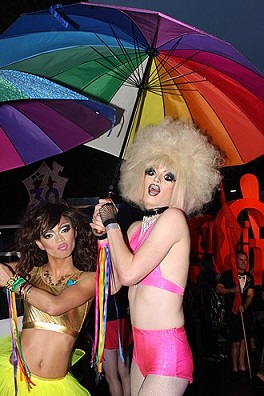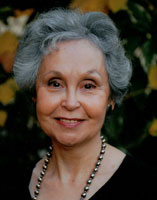
Courtesy of wikipedia.org
I came across an acronym recently which puzzled me. Someone critical of J. K. Rowling’s position on transgender women accused the writer of being TERF. I had to look up the term and found it means activists who seek to limit full equality for transgender people and exclude trans women from women’s spaces.
I was surprised. Nothing I’d read by Rowling suggested she wanted to limit transgender rights. I’m not even sure she wants to exclude them from women’s spaces. A recent poll revealed a majority of women don’t worry about sharing private spaces like bathrooms and dressing rooms with transgender women. What worries them were imposters in stilettos who mean to do them harm. Crimes of this sort may be rare, but to a victim, statistics mean little.
Data, in fact, reveals a stunning irony. Transgenders face greater harm in private spaces than women. In any case, Rowling’s fears, as I read them centered on how transgender issues affected women’s rights. A long-time feminist, I decided to examine her arguments.
Because the library on sex and gender is vast, this blog will rely on two documents as I review the issue: a) Rowlings’ “manifesto” on sex/gender and b) Scientific American’s article on what science has learned about the subject.
Rowling’s View:
For the record, literature on problems that arise when transgender men identify as men is scarce. The writer’s essay doesn’t address that question. Her focus is on transgender women, specifically those who self-identify. She raises 5 points to explain why she objects to defining them as women.
1. She fears the erosion of women’s rights, believing that trans-activism will erode the legal definition of sex and replace it with gender. The broadening effect, she assumes, will have negative consequences for women. Except as a physical act, Rowling does not attempt to define sex as opposed to gender, so her argument doesn’t flow from any premise. To be fair, I could find no legal definition of sex either. In many cases, the terms sex and gender are used interchangeably. Here’s one example:
2.Rowling explains that as a former teacher, she wants to safeguard the interest of children. Again, she fails to identify what those interests are. I can only point out that the transgender movement makes the same claim.
3. Rowling also worries that transgender campaigns will affect free speech. She cites the example of two women who lost their jobs because they opposed the transgender movement. That number pales, however, when compared to workplace firings of transgenders.
4. Rowling fears homophobia is driving many women to join the transgender movement. She admits she has no data to support this opinion, but points to social media as an influencer and couples it with patriarchy’s allure [for] escaping womanhood.
5. Her final point is anecdotal. As someone who lived as a battered spouse, she’s uncomfortable with transgender women who have done nothing but self-identify. She isn’t alone in that concern as the poll I cited earlier showed.
Scientific American on Sex and Gender:
Recent scientific discoveries are testing our understanding of ourselves. As the Scientific American article explains, physiology isn’t a definitive marker for a person’s sex. Possessing a penis or a womb doesn’t make an individual a man or a woman. Nor does the presence of XX and XY chromosomes. The arguments are as follows.
Genes within chromosomes can complicate sex identification. …new technologies in DNA sequencing and cell biology are revealing that almost everyone is, to varying degrees, a patchwork of genetically distinct cells, some with a sex that might not match that of the rest of the body…[suggesting] there’s a much greater diversity within male and female, and there’s certainly an area overlap where some people can’t define themselves within the binary structure.
As we know, the sex of an embryo is indeterminate during the first 4-5 weeks of gestation, a time in which genes do a mysterious dance to manifest sex. During that time, various combinations of gene expression are possible. What’s more, some scientists suspect sex assignment isn’t immutable. Realignments can occur post-natally without medical intervention due to hormonal changes. Scientists base their suspicion on mice studies.
We also know that individuals sometimes possess both male and female genitalia, one external and the other internal. A woman might discover this about herself while undergoing going fertility treatments, for example. Another condition is Mosaicism. With this variant, a person has more than one genetic makeup. Fraternal twins are an example, a case when one embryo carries two different sets of genes.
More combinations exist but these are sufficient to explain why biologists see sex as a spectrum rather than binary. If society wants a more definitive standard, it will have to draw a line somewhere along that spectrum to define male and female. It wouldn’t be the first time society has made an arbitrary decision. We award adulthood to individuals when they turn 18 even though the human brain doesn’t fully develop until the mid to late twenties.
Another alternative to the sex/gender equation might be to eliminate the concept of sex, though it flies in the face of centuries of human understanding. Yet another approach would be to establish a legal definition for a third sex.
What we do know is that defining sex is complicated. Learning a person’s gender is easier. Because the term refers to the way an individual’s emotional and mental identity aligns with biology, the best way is to ask.
Issues of Concern:
Society will eventually decide where transgenders fit in the sexual spectrum. The debate so far has been rancorous with science, lawyers, and stakeholders shedding little light. Nonetheless, transgender women who self-identify would be wise to ponder the cost of being defined as a woman.
In, “An ‘Ominous’ Sign for Equality,” Carrie N. Baker paints a dark picture of female rights in the future. (Ms. Spring 2023, pgs. 31-33) When Dobbs v. Jackson Women’s Health Organization overturned Roe V. Wade, the Supreme Court established a standard by which constitutional claims will be judged. Either they must be specifically stated in Constitution. Or, the claim can be established by historical precedent.
As the 14th Amendment is silent on the right to an abortion, the High Court ruled no right exists. That fact may have no consequence for a transgender woman but the second criterion should raise an alarm.
The original version of U. S. Constitution contains no reference to women. The 19th Amendment grants them the vote, but the document is moot on all other rights. It grants females no freedom to own property, undertake financial transactions without a male’s permission, or seek elective office, for example.
Relying on historical precedent makes a woman’s position more precarious. If the 14th Amendment, written in 1868, is to set the standard for women’s rights, then, except for the vote, they have none. In the absence of the Equal Rights Amendment, they are returned to the status of chattel.
Conclusion:
Rowling’s concern that embracing transgender women as women may harm the women’s movement is one I share. Both women and transgenders suffer discrimination, but if I’m allowed to use Boolean logic, a similarity isn’t congruency. Frankly, transgender women in society face greater hurdles. I’ll explain.
Women have always played a vital role in human communities, if only because they produce the next generation of the species. Feminists want more. They aim to remove historic remnants of subservience which they see as a stumbling block to equality.
Except for a few American Indian tribes, transgenders have had no role in American society. Their choice has been to choose between remaining invisible or expressing themselves and risk being treated as outcasts. Their quest for equality deserves support. But discrimination alone doesn’t give them commonality with women. As I’ve said, women seek to elevate their status. Transgender women, and all transgenders, want to have one. Rowling’s concern is that by conflating one goal with the other, we may lose both.
One example is the desire of transgender women who self-identify to participate in women’s sports. So far, that demand has done little but muddy the water on women’s rights. I can think of others and that causes me to heed Rowling’s warning. For the moment, I agree with her that transgender women who self-identify should not be defined as women even though the desire to end their suffering is palpable.
